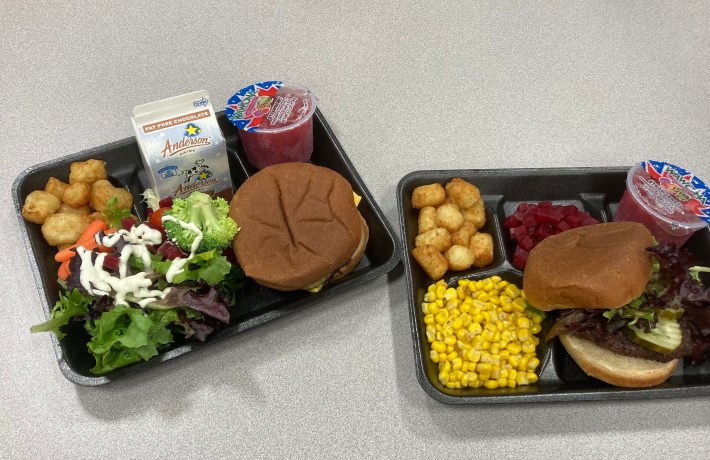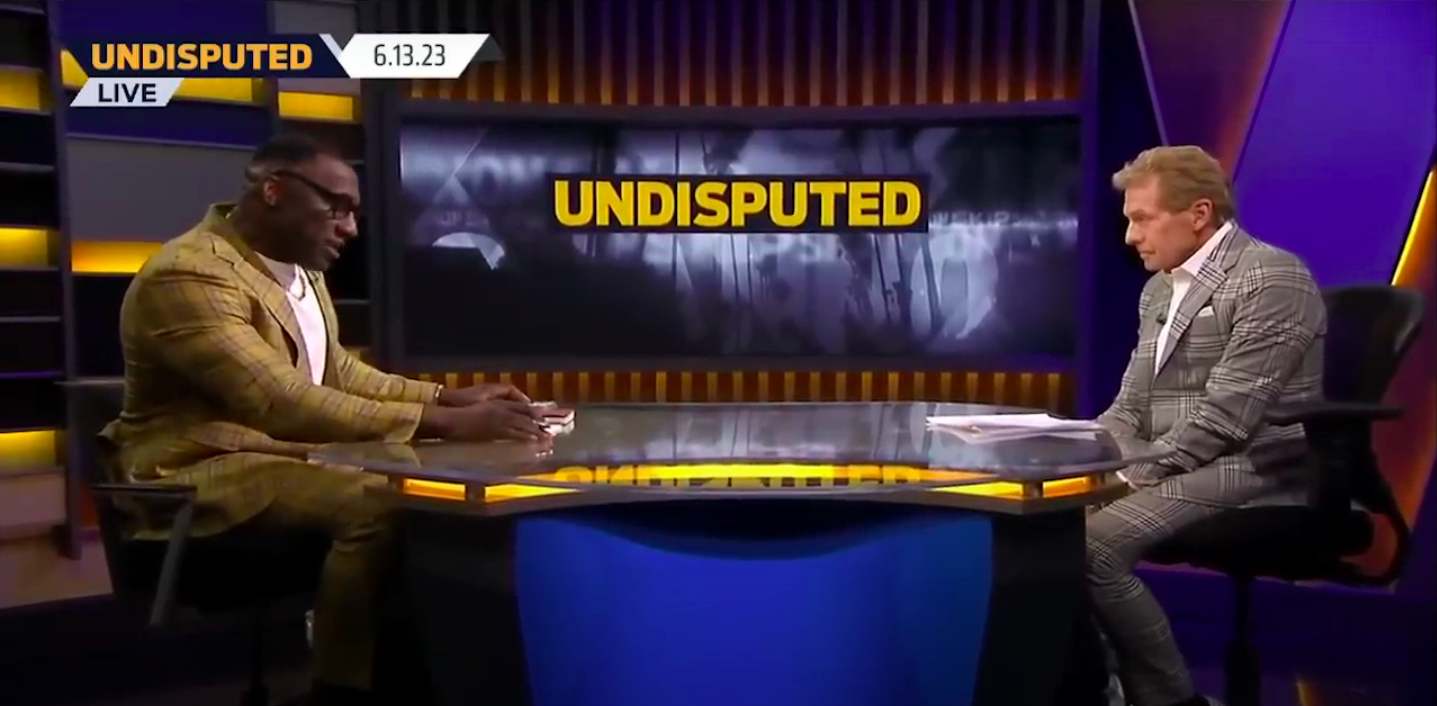Consider the sugar beet, a sweet and tapered tuber. Unlike tropical sugarcane, sugar beets grow in temperate zones, enabling colder regions of the United States to farm their own sugar instead of relying on imports. From the late 19th century through the late 1970s, Utah abounded with sugar beet farms, and the crop's presence influenced the state's food culture. To Kate Wheeler, who until recently worked for the U.S. Department of Agriculture's Food and Nutrition Service, the sugar beet is a perfect portal into the Farm to School movement. Students can learn about Utah's history with the beet in social studies class. They can plant the beets in school gardens. And they can sample beets from nearby farms in the school cafeteria. Ideally, they're doing all three.
This is the spirit of Farm to School, which is not a government program but a tool that makes those programs more effective, Wheeler explained. Farm to School can involve local procurement of food, nutritional education, and school gardens. But Wheeler believes the tool becomes stronger when all three of these wings are combined in classrooms, cafeterias, and the community. Students are learning about food and nutrition, they are being nourished during the school day, and local farmers are building connections to schools. "This is a movement to change the way all of these other programs are interacting with the food system," she said.
Wheeler's team served any school operating the National School Lunch Program, which provides nutritionally balanced meals to children each school day at little or no cost. As someone who ate school lunch growing up, Wheeler understands that the food has a mediocre reputation. That's part of what she was working to change. Whenever people assume the worst of school lunch, Wheeler always asks them, "Have you tried school lunch lately? Like, have you been to a school and eaten school lunch?" In some places, Wheeler said, "they're doing a really amazing job."
Wheeler's 14-person team served seven regions, with two people assigned to each region. But after the mass layoffs directed by Elon Musk's Department of Government Efficiency, or DOGE, the team was winnowed down to 11. This week, Wheeler and other probationary USDA workers were technically reinstated and placed on administrative leave after a series of successful legal challenges against DOGE. This means that Wheeler and these workers are receiving back pay but unable to work, pending more legal wrangling. (This interview was conducted outside Wheeler's working hours.) I spoke to Wheeler about what Farm to School meant for students, farmers, and communities; the dehumanizing rollout of her firing; and why every kid deserves a nutritious lunch.
This interview has been edited and condensed for clarity.
Could you tell me how you wound up in this line of work, and talk a little about your path toward federal service?
After I graduated from college, I had the opportunity to live in Micronesia for three years. I moved there as a volunteer teacher, and I was teaching math and physics at a high school. And one of the things I really noticed there is that they have some really diet-related poor health outcomes on these islands. Like, I had students who had such serious vitamin A deficiency that it was affecting their vision and then their ability to read and learn.
That really opened my eyes, I think, to two pieces of the food systems world. One was like, there's really, really serious impacts to diet. It's not just being healthy. The other side of that was none of this was individual choices that people were making. The island I was on has this long history of colonization that's really destroyed a lot of their traditional foodways and made it really hard for people to eat in a healthy way. As an individual living there, there's really nothing you can do at that point except look at systemic change. So that really inspired me to want to work more in that area, and I ended up working for their public health department for a few years, and then moved back to the U.S. to go to grad school for public health and nutrition.
I was in a global health program, and there was this emphasis on underserved communities all over the world, which—really important, still definitely has a piece of my heart—but at the same time, that's something we have going on in the U.S. as well, right? Especially if you're looking at our black populations and Indigenous populations and how that's shaped our health in our society over the years.
I moved to Utah in 2016 and started working with the State Board of Education, which is our education department here, for their child nutrition programs, which is the division that oversees school lunch, school breakfast, summer meals, afterschool snacks, all those things—those federal programs.
We had Farm to School as this side piece. Like, yeah, this is great. This is important. You can do it in your spare time. Over the years, while I was there, I was able to take that on and then actually create a full position out of that, which was really exciting and something I'm way more passionate about than compliance. It's really fun to do Farm to School, because you're really working on both sides of food systems change in the sense that you can have this immediate impact. School meal programs are buying billions and billions of dollars worth of food every year, and so directing those purchases and helping those purchases come from small local and regional markets can have a huge, huge immediate impact for those farmers. But the other pieces of Farm to School are nutrition and agriculture education and school gardening and getting kids these hands-on experience. We know not every kid is going to be a farmer, and we don't need every kid to be a farmer, but we want all of them to have interaction with agriculture and that hands-on experience with the food chain, so that they understand what that's like. Because they are going to grow up to be consumers and voters, regardless of what their actual profession is.
I got really lucky that there was an opening on the Farm to School team with USDA and and I was pretty well-known at that point, because I've been been in the world for a while, and so was encouraged to apply and was able to start there last February. And so I would say for then, 11 months, it was like a dream job.
Could you talk about what an average day looked like for you on the job?
My days had a pretty even mix of working with state agencies and external partners, and then internal work that we're doing in response to some of that. Maybe somebody would call me from Arkansas and say, "Hey, I have an aquaculture producer that wants to know if they can sell catfish to schools. Can they?" And we would talk about, OK yeah, you produce a lot of that in your state. That makes sense. Then I go back and check with our other agencies like Food Safety and Inspection Service and make sure we're really clear on what the requirements are that they need. And then if they already meet those, great. If they don't, OK, what are resources for helping them get up to par so they can? And then, on the flip side, reaching out to their child nutrition programs and saying, "Do you think your schools want to serve catfish? Do you need recipes? Do you need support? Do they know how to buy it? Do they know how to prepare it?" And then helping draw those connections too. We're saying, OK, well, Louisiana and Mississippi already do this. So let's get you connected to folks there who do so you can have that [peer] learning and support.
Internally, we would have a lot of work groups just to problem-solve some of these big, thornier things. Like the local procurement, which is schools buying local food for their school meals, is always sticky and hard for a lot of big food systems–related pieces. So internally, we're brainstorming—I'm on a work group for that—and we're saying, OK, how do we how do we make this easier? How do we reduce these barriers? Do they need more training? Are there things we need to be doing in using our leverage as USDA?
We have our grants program, which is paused right now, but it's normally an annual program, and so do a cycle when that RFP comes out, promoting it and helping make sure people have the resources to apply and understand and share it. And then once it closes, helping with scoring the applications and reviewing those. And then after the announcement, we usually do training and onboarding.
And the grants are going to schools or states or a mixture?
So there's schools and childcare centers that operate National School Lunch Program or the Child and Adult Care Food Program. State agencies can apply for them as well. And they can actually receive usually a pretty big chunk of money, because sometimes their needs are more statewide. Nonprofits. Farmers can also apply, if a farmer is saying, like, hey, I want to get into this, but maybe I need to change something about my production line in order to make it work for selling to schools. Indian tribal organizations—that is another big partner for us, those sovereign nations, and working to help get more Indigenous food in school meals. Especially [in] schools that have a high percentage of of Native students. Making sure that that culture is being represented and restored to the extent that we can.
What is difficult about local procurement for schools or for farmers?
You know, a food service director who is really busy and understaffed and underpaid goes online and clicks through and does her order from a broadline distributor. So the first piece of that is just, change is hard. And that's what a lot of the Farm to School people are doing on the state level, is really working with those folks individually to be like, OK, what piece of this could we change, right? Let's look at your menus and see what's something that we're growing here locally, that you are also serving on your menu, and we could work into this. What other resources do you need?
When we do this, we're not trying to necessarily just recreate that same system on a smaller, more inefficient scale. So we are looking at farmers that are growing in different ways and are usually a lot smaller, and so they don't necessarily have the distribution and warehousing infrastructure to service a big school district, right? There's districts out there that are serving 80,000 kids a day. That's a lot of carrots if you're a small farmer. And so it's like bridging that gap. There's a lot of middle of the supply chain issues to where food service staff maybe had never gotten like a carrot from the field that's all muddy and crusty and they need to wash it and cut it up. They're used to getting a bag of carrots and dumping it on the salad bar. So now you're asking them to do more work, you need to pay them more money, and they need training, and maybe you need a kitchen remodel. Like, school kitchens can vary so much. There's schools that are operating out of these amazing commercial-looking restaurant kitchens and then there's schools that are handing out sandwiches from a closet. That's not their fault, it's just the way it is. There's places where it's working really well, and local procurement is happening and happening smoothly. And then there's places where there's so many barriers, and helping them figure out how to take that baby step is where they're at.
Schools don't have a lot of money to spend on food. So there have been a lot of creative solutions to bridge that gap. And a lot of states were putting their own state funding towards what broadly get called local purchase incentive programs. And then there's been a lot of federal funding. And unfortunately, a big piece of that just got pulled back by the Trump administration as well.

I wanted to ask more directly about your work with Indigenous communities. You mentioned trying to source Indigenous food for schools.
When I was in in Utah, we actually had some grant funding that we were using to buy local meat, and we were able to enter into a contract with the Ute tribe here—they have a federally managed bison herd—to be able to buy some of their bison for schools to use in schools and school meals. And it was really, really amazing to see what schools did with that. We had a charter school that then invited some of the members of the tribe to come out and do this educational pow wow for their school community, and they serve this bison chili. It's just tremendous.
Living in the Southwest, water is such a fraught issue here. And you hear a lot that, well, maybe we shouldn't be growing food right here. My comeback to that is like, well, people are living here, so maybe we shouldn't be living here, if that's the case. But also people have been living here and growing food here for over 10,000 years. They know how to do it. And so for me, a big part of sustainability and climate resilience, if we want to keep living in this part of the the country, is making sure we don't lose that knowledge completely, and that we're resurrecting and supporting it.
Could you talk about your firing and the experience leading up to it?
We started getting these vaguely threatening emails that were like, by the way, if you're a probationary employee, you can be fired at any time for any reason, and we're putting your name on a list. Basically, we got a couple of those. And and I was like, That doesn't sound right. I've never paid that much attention to what it would be like to be a probationary employee, because honestly, I know I'm good at my job and I'm a good employee. So it was like, why would I even worry about that? So I went and looked at the Code of Federal Regulations, and I was like, no, we can be fired for misconduct or poor performance, and they don't have to go through any kind of grievance process for that. But that's different than "any time and any reason."
[On Feb. 14] I got a letter just saying that, based on my performance, it was not in their interest to to keep me in my position—which is so insane, because it's one of those things where, just looking at this, I'm like, my supervisor thought I was doing a fantastic job. I have glowing performance reviews, and I received multiple performance awards in the year I was there. It was very surreal to message her and be like, hey, I just got a termination letter. She called me and was just freaking out, and she's like, I had no idea. Even her boss had no idea. So this is multiple layers up where they somehow mysteriously decided that based on all of our performance, we needed to be fired. It was just done in such a ham-handed way, too, which was like a little bit of insult to injury when they're saying that.
Sometimes you do have to fire people. I've been a manager before and had to do that. Or sometimes you have to lay people off. But there's good and bad ways to do it. And this was just so dehumanizing and disorganized and poorly thought out that it made it a lot worse than just losing your job.
I know this is hard to measure exactly, but with your firing, and the firings of your colleagues and these contractors, what will the effect be on your department?
We don't provide an emergency service, right? Everything we do is built on long-term change. So it's not that anything is going to be terrible tomorrow because I'm not there. It's just going to be so much harder for the people that are trying to do this work. None of the need went away because there's fewer people doing this work. And it's just going to be harder to accomplish everything. And it's going to take longer.
A lot of us go above and beyond what we have to do because this is work that most of us are really passionate about and believe in. And so a lot of that above and beyond is just going to go away. And it's going to be the minimum. Small farmers are going to have less support. School lunch programs are going to have less support. We like to say, like, Farm to School is a triple win: It's a win for farmers, kids, and communities. So so all three of those groups are going to hurt a little bit more.
Are there any other fears or concerns you have for Farm to School under this new administration, or with potentially more layoffs?
Federal assistance programs are being attacked from every direction, and Farm to School touches so many of those that it's now getting arrows from every direction. So it's not just us being fired, but it's the fact that there's a lot of work being done to cut funding for school lunch programs in general. And they already are operating on these razor-thin margins. And then on the flip side, there was all this funding for farmers from the Agricultural Marketing Service at USDA that was being used to buy local food for school meals; that has been cut by the administration. So that's really hard for those farmers. And I think it just goes on and on in that sense. They're just cutting it apart into pieces from every direction.
Is there anything you would want to share with readers, either a call to action or something people might be able to do to help?
A lot of people's experience with direct interaction with the government is going to the DMV or something like that. But in the meantime, they are driving to work on a road and bringing their kids to a school where the kids are getting fed. And they are have clean water and electricity in their house, and all of these things. And air is breathable instead of chewable. And you go to the grocery store and there's food on the shelves, and that food is safe to eat. And all of that is the result of governments working together, from the federal level to the municipal level. And you don't see it because it's working. And you shouldn't see it, right? When government works, you shouldn't notice it. But I've had a lot of people saying things like, well, the USDA doesn't do anything for us anyway. And I just want to be like, Do you eat food?
Really reflect [on] what it would look like if all those things went away. And then call your representatives. It's such a bummer when that's the only suggestion you have. Really at this point, I wish I knew the answer to make this all stop. I don't think very many people do, because this is so strange and unprecedented. But I think there are a lot of people out there right now who are quietly OK with this because they don't see what the long-term damage is going to be.
This past Friday, on the 14th, I got an email saying that I was back in paid status—and we were getting back pay—but being placed on paid administrative leave until they can figure out how to phase us back in. Right now, I'm being paid to not work because of the Department of Government Efficiency.






